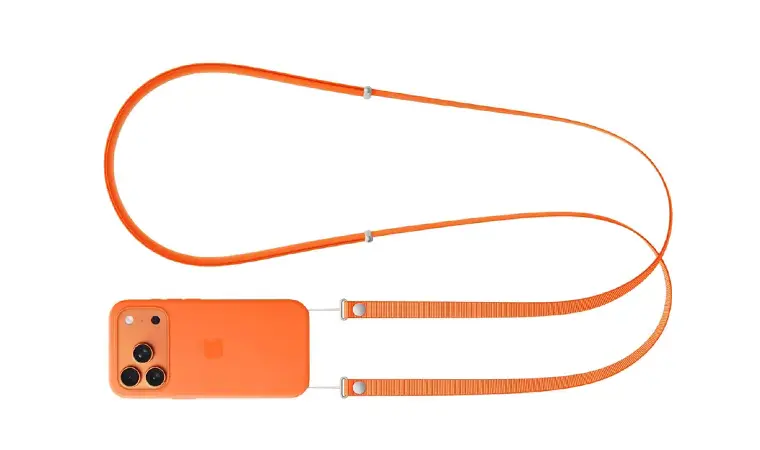As the highly anticipated launch of the iPhone 17 approaches, the world's attention is once again fixed on the Apple ecosystem. However, beyond the phone's technological innovations, a simple yet practical accessory is rapidly becoming a market sensation: the phone lanyard. From stylish crossbody straps to simple wristlets, consumers are increasingly drawn to this hands-free solution that doubles as a fashion statement. For accessory brands and B2B buyers, this is not just a new business opportunity but a test of product quality and supply chain capabilities.
As a leading webbing manufacturer with over 20 years of experience, we understand the quality standards behind even a small lanyard. It must not only securely hold an expensive smartphone but also ensure a comfortable feel and long-term durability. This article provides a professional manufacturer's perspective on how to source and customize high-quality phone lanyards to capitalize on the trend sparked by the iPhone 17.
Why Have Phone Lanyards Become a Must-Have Fashion Accessory?
The rise of the phone lanyard is no coincidence. It perfectly meets the demands of a modern, fast-paced lifestyle:
- Convenience and Security: Whether commuting, shopping, or engaging in outdoor activities, a lanyard keeps the phone accessible while effectively preventing accidental drops or loss.
- Fashion Expression: Lanyards have evolved beyond mere functionality to become a fashion accessory. Consumers want to match their outfits with lanyards of different materials, colors, and designs to express their personal style.
- Functional Integration: From simple straps to smart lanyards integrating card holders, charging cables, or even NFC functions, multi-functional designs are becoming a new trend.
It's particularly noteworthy that Apple is rumored to be releasing its own MagSafe "Crossbody Strap" for the iPhone 17, which will undoubtedly fuel the market's demand for high-quality third-party lanyards.
The Core of a Phone Lanyard: Choosing the Right Webbing Material
The material of a lanyard directly determines its durability, comfort, and appearance. For B2B buyers, understanding the properties of different webbing materials is crucial.
1. Nylon: The Top Choice for Strength and Durability
Nylon is the gold standard for high-quality phone lanyards, especially for products focused on performance and security. Its main advantages include:
- Superior Strength and Abrasion Resistance: It can easily support the weight of a phone and withstand daily wear and tear.
- Soft and Smooth Texture: It remains comfortable even with prolonged skin contact, without feeling coarse.
- Moisture Wicking and Some Elasticity: It can absorb shock, providing better protection for the phone.
For brands looking to create high-end, sporty, or outdoor-oriented phone lanyards, choosing high-performance Nylon Webbing is key to ensuring product quality and customer satisfaction.
2. Polyester: The Ideal Choice for Cost-Effectiveness and Customization
Polyester is another widely used material, known for its excellent cost-effectiveness and versatility. Its features include:
- Excellent UV Stability and Water Resistance: It is less prone to fading from sun exposure and does not absorb water, making it ideal for outdoor use.
- Low Elongation: The lanyard is less likely to stretch or deform, maintaining a consistent length.
- Rich Colors and Printability: Polyester webbing is perfect for printing processes like heat transfer, allowing for complex and colorful patterns and brand logos.
If your product line focuses on fashion, trends, and large-scale customization, Polyester Webbing is an excellent choice that balances cost and visual appeal.
Beyond Material: Key Specifications for B2B Sourcing
A great phone lanyard requires attention to detail beyond the material. When communicating with a supplier, be sure to confirm the following:
- Webbing Width and Thickness: Common widths range from 8mm to 20mm. Wider webbing offers better comfort, especially for crossbody designs, but needs to be balanced with aesthetics. Thickness directly impacts durability and texture.
- Hardware Quality: The quality of hardware like hooks for attaching to the phone case and buckles for adjusting the length is critical. Ensure they are sturdy, durable, and have a smooth finish to avoid scratching the phone or clothing.
- Customization Method: Do you want your brand logo woven directly into the webbing using a jacquard technique, or printed? As detailed in our guide comparing Jacquard and Printed Webbing, the jacquard method is more durable and premium, making it the preferred choice for branding.
- Safety and Compliance: If your product targets specific markets (e.g., for children or in Europe), ensure that the materials and dyes comply with environmental safety standards like OEKO-TEX® and REACH.
Partner with a Professional Webbing Manufacturer to Create a Bestseller
While the phone lanyard market may seem easy to enter, quality and design are key to standing out in a competitive field. From high-spec webbing for military gear to custom jacquard straps for high-end luggage, our understanding of webbing extends to every single thread.
We not only provide nylon and polyester webbing that meets strength and durability standards but also offer a one-stop solution from design to finished product based on your brand's positioning. Whether it's achieving unique colors, weave textures, or developing functional hardware, our expertise can help you succeed.
Ready to seize the massive opportunity presented by the iPhone 17? Contact our webbing experts today to discuss your custom phone lanyard needs and let's create the next market hit together!

